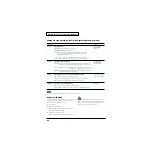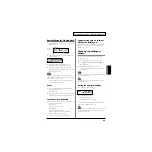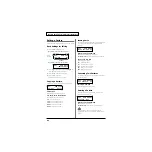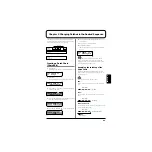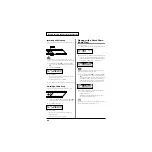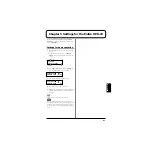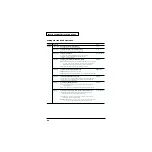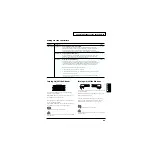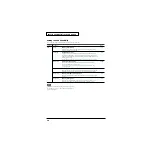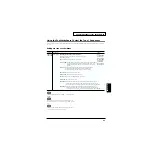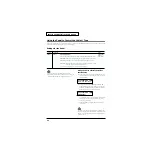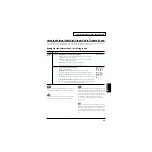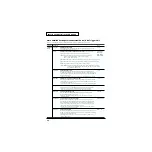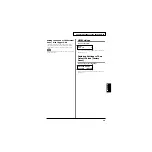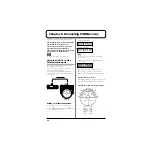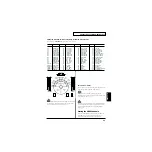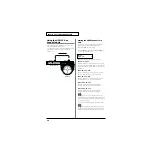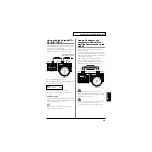
76
Chapter 6 Connecting MIDI Devices
There are many possibilities when using MIDI, such as:
Use the HPD-15 to play external instruments
Use the HPD-15 as a sound module
Use an external sequencer to record/play
back the performance on the HPD-15.
Use an external sequencer to save/load patch
data, pattern data, etc. (Bulk dump)
For more on MIDI, refer to “About MIDI” (p. 88).
Using the HPD-15 to Play
External Instruments
Make settings for using the pads, D Beam, and ribbons to
play external MIDI sound modules.
By making these settings, you can simultaneously play the
HPD-15 and external sound modules.
Use a MIDI cable to connect the HPD-15’s MIDI OUT
connector to the MIDI IN connector of the external MIDI
sound module.
fig.6-01.e
Setting for MIDI Transmission
1.
Press [EDIT] twice, and you will enter Edit mode.
2.
Press [
PARAMETER] or [PARAMETER
] to
display the MIDI setting screen.
fig.6-02.e
You can make your selection rapidly by using the Skip
Function (p. 32).
3.
Strike a pad to select the pad (D Beam, ribbon) that you
wish to edit.
fig.6-03
4.
Turn [PATCH/VALUE] to modify the value.
5.
Repeat steps 3–4 to continue setting on each pad.
6.
When you are finished editing, press [EDIT] or [EXIT].
Note No.: OFF, 0:C-1 –127:G 9
Set the MIDI note number that each pad will transmit. If you
select “OFF,” no MIDI note message will be transmitted.
Note Number of Each Pad (Factory Settings)
fig.6-03a.e
MIDI sound module
MIDI IN
MIDI OUT
HPD-15
U0101A1 PAD MIDI
Gate Time 0.1sec
U0101A1 PAD MIDI
Note No. 60:C 4
Note Number setting display
Gate Time setting display
U0101C5 PAD MIDI
Note No. 73:C#5
60:C4
64:E4
67:G4
71:B4
74:D5
61
62
63
65
66
68
69
70
72
73
C#4
D4
D#4
F4
F#4 G#4
A4
A#4
C5
C#5
79:G5
59:B3
78:F#5
77:F5
57:A3
58:A#3
D Beam
Ribbon L
Ribbon R
Trigger 1
Trigger 2
Pedal

